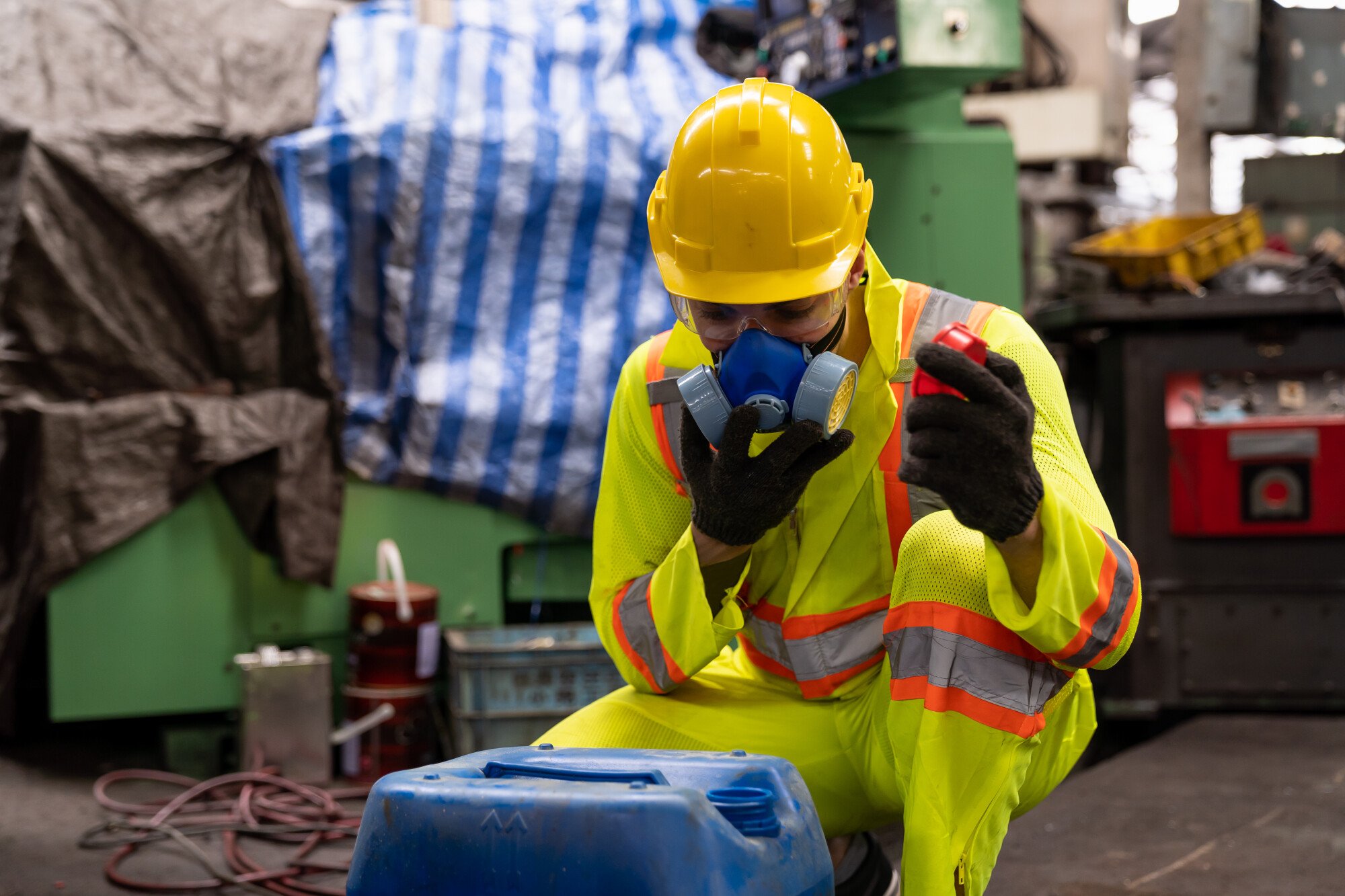Hexane stands out among many other industrial chemicals not only due to its utility but also because of its dangerous nature. Hexane hazards are a reality that any workplace involving this liquid should be aware of. So, what makes hexane so dangerous and what should you do to protect both yourself and others who work with it?
This page will shed light on some of the health hazards that hexane presents. These include its flammability and how exposure can affect people. By reading on, you will learn crucial information not only to protect your workplace but also those who spend time there.
The Health Implications of Hexane Exposure
Hexane has both short and long-term effects on the human body. Immediate exposure is fast-acting and can cause issues such as:
- Dizziness
- Headaches
- Nausea
Over an extended period, though, people may develop conditions related to long-term hexane exposure. This might include chronic conditions and is detectable through such symptoms as:
- Muscular weakness
- Nerve damage
This type of harm emphasizes the need for steps that ensure hexane safety in the workplace.
Hexane’s Flammability Dangers
A hexane fire is far more likely than with other materials used in industrial settings. Many factors make the danger of hexane flammability infamous. These include:
The low flash point of hexane, which then means it has an ignitable surface even at low temperatures.
Hexane has a high vapor pressure, leading to high levels of evaporation at room temperature.
Very low ignition energy meaning even a small spark poses danger.
Hexane’s rapid combustion speed can lead to explosions if the fluid remains contained in small spaces.
Where is Hexane Used?
It is important to understand how common hexane is, as when working in several different industries you may end up exposed to this substance. The material is a very common component in many industries, and the vast number of uses means its danger is often acceptable. Examples of its universal usefulness include its use as an:
- Oil-dissolving solvent in the food processing industry
- Reaction medium in the creation of polymers
- Ingredient in the creation of adhesives
- Cleaning material in the textile industry
- Component in the creation of gasoline
- Propellant in aerosols
As you can see, there are many hexane uses across different industries, meaning it is likely here to stay.
Safety Guidelines for Hexane Hazards
As hexane is a commonplace material, you need to understand what to do should you need to be around it. The following are some of the best practices to help you avoid coming to harm. Of course, you should also follow any safety guidelines set by your industry.
Education and Training
Make sure you and anyone else using hexane approach any training material with a serious demeanor. Not only this, but you must maintain an attitude of continuous learning and retraining. This will mean you are always up-to-speed on the latest safety standards.
Make sure to seek out competency assessments and official certification. This will ensure everyone using the material will adhere to the same level of standards and respect the liquid’s potential danger.
Avoiding Inhalation
As listed above, inhalation of hexane can pose many dangers to the human body. Ensure you either keep hexane in a sealed container or use a ventilation system to avoid contact with its vapors.
Personal Protective Equipment (PPE)
The exact nature of the PPE you should use will depend on your specific industry and circumstances. Still, you should expect something along the lines of the following to exist on a safety data sheet (SDS):
- Flame resistant clothing
- Safety glasses
- Chemical-resistant gloves
- Non-reactive containers for transportation
These will prevent spillages, reactions with other materials, or the liquid touching bare skin.
Disposing of Hexane Waste
Hexane waste is not only dangerous to humans but can have a huge impact on the environment around a site on which people use it. Hexane is a hazardous material, and both its flammable nature and volatility could cause serious harm if disposed of poorly.
When moving hexane, you should use sealed containers with clear labels describing the danger of their contents. You should then either store the material in a designated safe location or dispose of it sensibly. Disposal will often mean controlled burning, converting the hexane into both water and carbon dioxide.
Licensed facilities can also take the waste and either process it for further use or incinerate it as described above. Depending on the location, this may have a cost you will need to pay.
Emergency Steps on Contact With Hexane
Should you or anyone else touch hexane, you must immediately take action. You should follow the steps contained in your organization’s safety guidelines, which may include:
Wash the area with room-temperature water for as long as possible, removing any clothing or jewelry from the area. Use eyewash if the hexane gets in someone’s eyes, or move away from the area if inhalation occurs.
Regardless of the type of contact, call 911 to seek immediate medical attention.
Reacting to Spills
When a spill occurs, you should inform others in the area and ensure everyone moves to a safe distance. Prevent entry by non-emergency personnel into the area for both your and their safety. Also, follow the instructions in your safety guidelines at all times, as you may need to report it to an outside authority.
If a small amount of hexane spills inside a ventilated and enclosed area, you may use PPE and attempt a cleanup yourself. Do not do this, though, if your safety guidelines prohibit it.
Handling Long-Term Safety
The reality of hexane hazards demands both ongoing learning and putting steps in place that push vigilance in the workplace. Together, these allow you to create a safer environment now, as well as long into the future. This is where we can help you out.
SDS Software from Kelleher, Helmrich, and Associates allows you to manage your safety documents. This functionality can empower your team to both follow and update safety documents with ease. So, schedule a demo of our software and learn how this leader in document management can ensure a safer workplace today.


